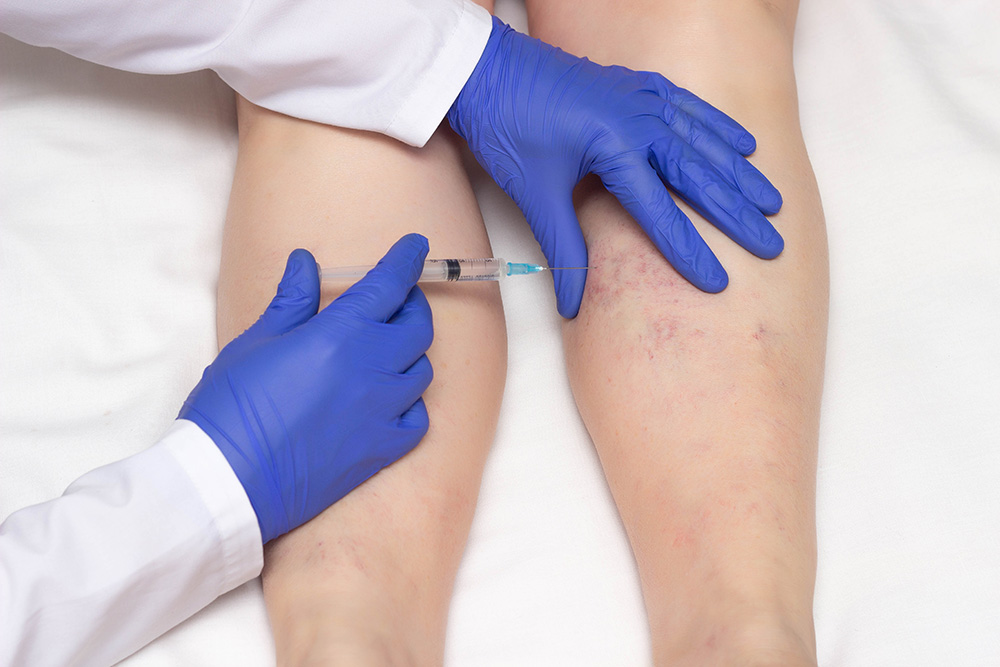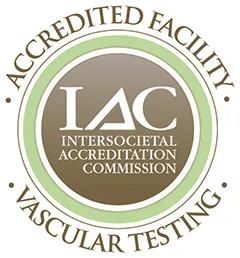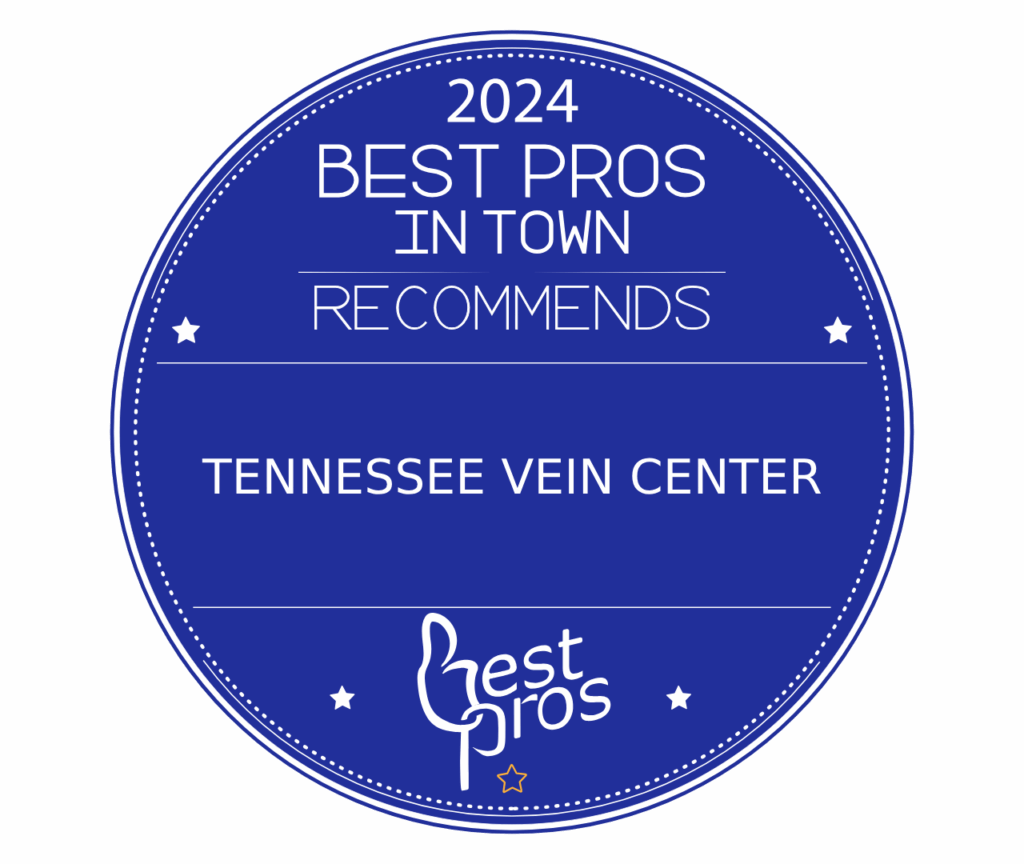Is there a safe, minimally invasive way to get rid of unwanted varicose and spider veins? Can you improve the appearance of your legs without surgery?
At Tennessee Vein Center (TVC), patients often ask these exact sclerotherapy questions when exploring their options for vein health. Widely considered the gold standard in vein care, sclerotherapy treatment is a safe and effective procedure that has been used for decades, offering lasting results.
Below, we’ve answered the most common questions about sclerotherapy for varicose and spider veins to help you feel confident, informed and prepared before booking a consultation.
What is sclerotherapy?
Sclerotherapy is a non-surgical procedure designed to eliminate varicose and spider veins. During the procedure, a vein specialist injects a small amount of medication (called a sclerosant) directly into the targeted vein. This causes the vein wall to collapse and eventually be reabsorbed by the body. Over time, blood naturally reroutes to healthier veins, improving overall circulation and appearance.
How does the sclerotherapy procedure work?
At TVC, sclerotherapy treatments are performed by board-certified vein specialists who focus exclusively on vein care. For small spider veins, your provider uses visual guidance, while ultrasound guidance helps treat deeper varicose veins. During the procedure, your physician carefully injects a tiny amount of sclerosant into the targeted veins to close them.
Treatments are done in-office, usually take 30–45 minutes and no anesthesia or hospital stay is needed. Most patients can walk out and return to normal activities the same day.
Sclerotherapy for varicose veins vs. spider veins
Spider veins are small, web-like clusters close to the surface of the skin, often on the legs, ankles or face.
Sclerotherapy is a highly effective treatment for these cosmetic concerns, helping improve the appearance of your skin.
Varicose veins, on the other hand, are larger, bulging veins that can cause aching, swelling or heaviness. Sclerotherapy can treat smaller varicose veins, but deeper or more severe cases may benefit from other treatments (like endovenous ablation).
Common sclerotherapy questions and answers
Is sclerotherapy painful?
Sclerotherapy can cause some mild discomfort, like a brief pinch or cramping at the injection site. However, most patients find it far more comfortable than alternative treatments or traditional surgery, and any discomfort is short-lived
How much does sclerotherapy cost?
The cost of sclerotherapy depends on several factors, including:
- Number of sessions needed
- Geographic location
- Extent of treatment (e.g., number of veins treated)
- Post-treatment supplies (e.g., compression stockings)
- Insurance coverage (if applicable)
According to the American Society of Plastic Surgeons, the average cost of a sclerotherapy session is around $500, and is often paid out-of-pocket. At TVC, we provide personalized estimates after evaluating your unique needs during your consultation, so you’ll know exactly what to expect.
How long does sclerotherapy last?
Once a treated vein collapses, it does not return. However, new veins may appear over time due to genetics, lifestyle or aging. Most patients enjoy visible results for three to five years. Occasional maintenance treatments can help keep your legs looking smooth and healthy for the long term.
What should I expect after sclerotherapy treatment?
Immediately following sclerotherapy treatment, it is common to experience temporary redness, soreness and swelling at the injection sites. Patients with larger veins may also experience mild lumpiness or skin discoloration in the treated area (all of which typically resolve on their own).
You’ll be able to walk right after the procedure, and TVC encourages light movement to promote healthy blood flow and circulation. Compression stockings are usually recommended for 1–2 weeks to support healing and optimize results.
What is the typical recovery time after sclerotherapy?
Sclerotherapy recovery is quick, with little to no downtime. Most patients return to normal activities the same day, though strenuous exercise should be avoided for 24–48 hours. Following these simple aftercare guidelines helps ensure the best results and a smooth recovery.
Sclerotherapy results and effectiveness
Does sclerotherapy work for spider veins?
Yes. Clinical studies report a 50–80 percent improvement in treated spider veins after sclerotherapy, with visible fading typically seen in three to six weeks.
How effective is sclerotherapy for varicose veins?
Sclerotherapy is highly effective for treating spider veins and smaller varicose veins. For larger or symptomatic varicose veins and other vein conditions, additional treatments may be recommended to achieve optimal results. At TVC, every treatment plan is personalized, and in some cases, a combination of approaches provides the best results.
What can I expect from sclerotherapy? Before and after results.
Patients often notice smoother, clearer skin and a boost in confidence after sclerotherapy treatment. Treating diseased veins can also reduce leg heaviness, fatigue and swelling, improving appearance and overall leg comfort.
Before & After Photo Gallery
Safety, risks and side effects of sclerotherapy
What are the short- and long-term side effects of sclerotherapy?
Short-term side effects of sclerotherapy are usually mild and often resolve within a few days or weeks. They may include redness, soreness and bruising at the injection sites. Rarely, patients may experience allergic reactions or small skin ulcers
Long-term side effects are very uncommon. In rare cases, side effects can include skin discoloration, permanent bruising, new spider veins (e.g., matting), skin ulcers, nerve irritation, or, even more rarely, serious complications like deep vein thrombosis or pulmonary embolism.
TVC providers carefully evaluate each patient to minimize risks and provide guidance for safe, effective treatment.
What are the risks and benefits of sclerotherapy treatment?
Benefits
- Minimally invasive
- Highly effective for spider veins and smaller varicose veins
- No anesthesia required
- Minimal downtime, allowing a quick return to daily activities
Risks
Like any medical procedure, sclerotherapy carries some risks.
Most are mild and temporary. Serious complications, like deep vein thrombosis, are rare when the procedure is performed by experienced vein specialists like those at TVC. Common risks include:
- Bruising and selling
- Minor discomfort
- Infection at the injection site
- Discoloration
Who are the best candidates for sclerotherapy?
Factors that make a good candidate
- Healthy adults with small to medium spider or varicose veins that cause cosmetic concerns or discomfort
- Individuals who are not pregnant or breastfeeding
- Individuals with no history of blood clots or clotting disorders
Who should avoid sclerotherapy?
Sclerotherapy is not recommended for individuals who:
- Are pregnant or breastfeeding
- Have known allergies to the sclerosing agent
- Have acute blood clots, acute systemic infections, chronic systemic illnesses (e.g., uncontrolled diabetes)
- Have severe peripheral arterial occlusive disease
- Have a history of serious negative events from a previous sclerotherapy treatment
Your provider at TVC will review your full medical history before recommending treatment.
What to know before your sclerotherapy treatment
Sclerotherapy questions to ask your vein specialist
- Which type of sclerotherapy (visual vs. ultrasound-guided) is right for me?
- How many sessions will I need for my desired results?
- What are the risks in my specific case?
- What lifestyle changes can help prolong my results?
Preparing for your sclerotherapy procedure
One to two weeks before
- Avoid certain medications (e.g., aspirin, non-steroidal anti-inflammatories, blood thinners) unless approved by your provider
- Avoid chemical peels, waxing, electrolysis or laser treatments on the area to be treated
A few days before
- Limit alcohol and smoking to promote healing and circulation
On the day of your procedure
- Avoid lotion, cream or oil on the area to be treated
- Do not shave the treatment area
- Wear loose, comfortable clothing
- Bring compression stockings for aftercare
- Eat and stay hydrated
- Arrange a ride home if needed for comfort
Why choose Tennessee Vein Center?
At Tennessee Vein Center, vein care isn’t a side service. It’s our specialty.
Unlike med spas or general practices that offer occasional cosmetic treatments, TVC focuses exclusively on comprehensive vein health, combining medical expertise with aesthetic results.
Our team of board-certified vein specialists uses advanced ultrasound-guided techniques to treat veins safely and effectively, while providing compassionate, personalized care. From improving comfort and circulation to enhancing the overall appearance of your legs, we prioritize outcomes that make a lasting impact.
If you’re ready to see whether sclerotherapy or another vein treatment is right for you, schedule a consultation with Tennessee Vein Center today.


